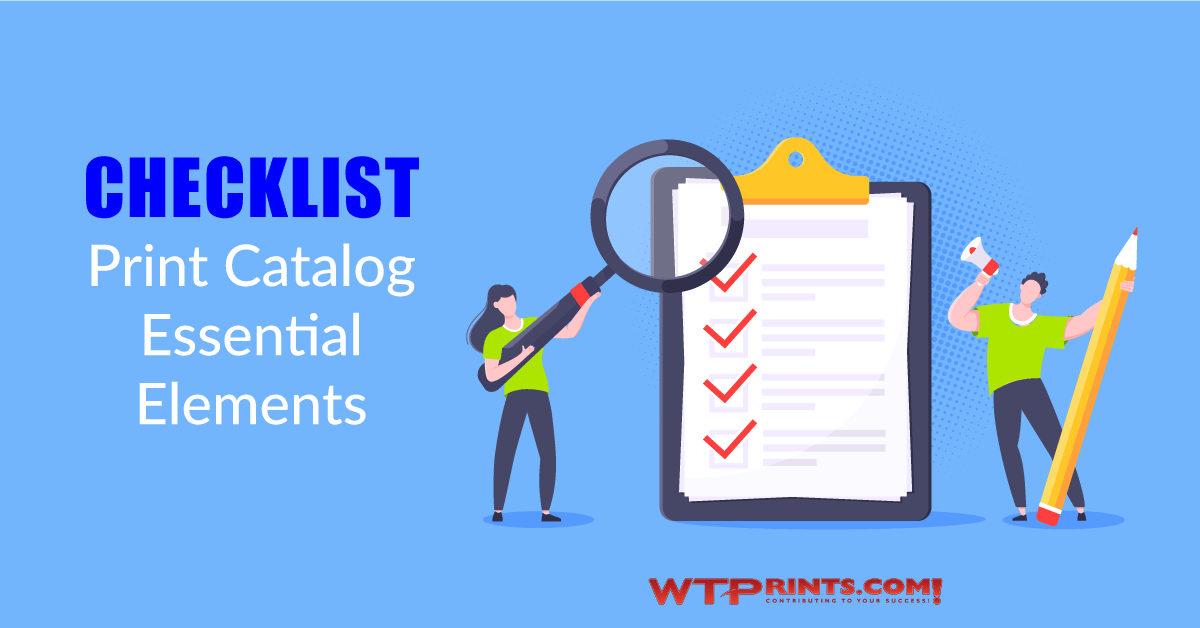Below is a checklist of essential elements to consider for creating an effective print catalog. Not every item needs to be included, but each should be considered during the design phase.
There are two ways to use this list.
1 - The first way is to use it when working with your clients on a catalog project. It avoids production surprises by ensuring that nothing is left out during the planning phase.
A checklist also brings up opportunities for up-sells that your client might not have considered.
2 - The second way is to use it as a lead magnet on your website to attract catalog customers. You can either create your own checklist from the content below, or download a PDF here and brand it with your info.
Print Catalog Checklist of Essential Elements

❑ Cover: The cover should be visually appealing and instantly grab the reader's attention. It should clearly convey the theme or focus of the catalog.
❑ Table of Contents: A table of contents helps the reader easily navigate the catalog and find specific products or categories. The catalog should be organized in a way that makes sense for the end user.
❑ Product Photographs: High-quality, professional product photographs are critical. All images and graphics should be high resolution 300 dpi at 100% size. Show products from different angles. Include photos of product variations such as color options.
❑ Product Descriptions: Every product needs a clear and compelling description that provides all necessary information a consumer might want. This includes features, benefits, sizes, variations, delivery options, and pricing.
Personality can also be a big help. Don’t be afraid to include storytelling about the products, employees, interesting customers, or the local area. A Harvard Business Review study found catalog "...designs with photos and narratives are 40% more effective in sales and customer engagement than designs with only photos and product names."
❑ Textures and Scents: Unusual textures and aromas create a multi-dimensional print experience that can’t be duplicated online. Would this help the client’s catalog?
❑ Personalization: Consumer data can be used to personalize each catalog with items such as past purchases or groups of products targeted to various niches. What past data might be used?
❑ Links: Relevant links to product pages or other website pages can be included as either text or QR codes (or both.)
❑ Pricing: Consumers want to see pricing for all products in the catalog. If pricing is volatile or subject to frequent change, you can include a separate price sheet with the catalog.
❑ Ordering Information: An effective catalog needs clear instructions on how to place an order, including contact information. Instructions should also be be included on how to get relevant discounts or promotions. It helps to be consistent about the design and placement of calls-to-action (CTAs).
❑ Return Policy: The company or product return policy should be clearly stated in the catalog to build customer trust.
❑ Customer Service Information: A catalog should include clear customer service contact information. Include phone numbers, emails and website links.
❑ Branding: The catalog should reflect the branding and aesthetic of the company, including the logo and color scheme.
❑ Digital Catalog: Will there be an online version of the catalog? If so, it’s best to select the digital format while the catalog is in the design phase. There are plenty of digital catalog makers that quickly convert PDF files to online versions.
❑ Product Videos: You can link to relevant product videos in the print catalog. And of course, videos can and should be included in nearly any online catalog.
❑ Mailing or Fulfillment: Does the client have an internal mail list? Is it up to date? Do they need to purchase a mailing list? Or perhaps they need you to manage their direct mail marketing.
❑ Print Provider: Work with your print provider from the beginning. They will help you design and lay out a catalog that meets postal requirements and end user needs. They'll help you determine whether a saddle stitched catalog or a perfect bound catalog is the best way to go.
Selling print catalogs to your existing clients is a superb way to grow your business. It’s also an effective way to attract new clients.
If you need assistance in creating a catalog project for your clients, be sure to give us a call at 559-251-8595.
As a trade only shop, we work ONLY with print resellers and never with the end user.
Check out this page for more ways to grow your printing business.